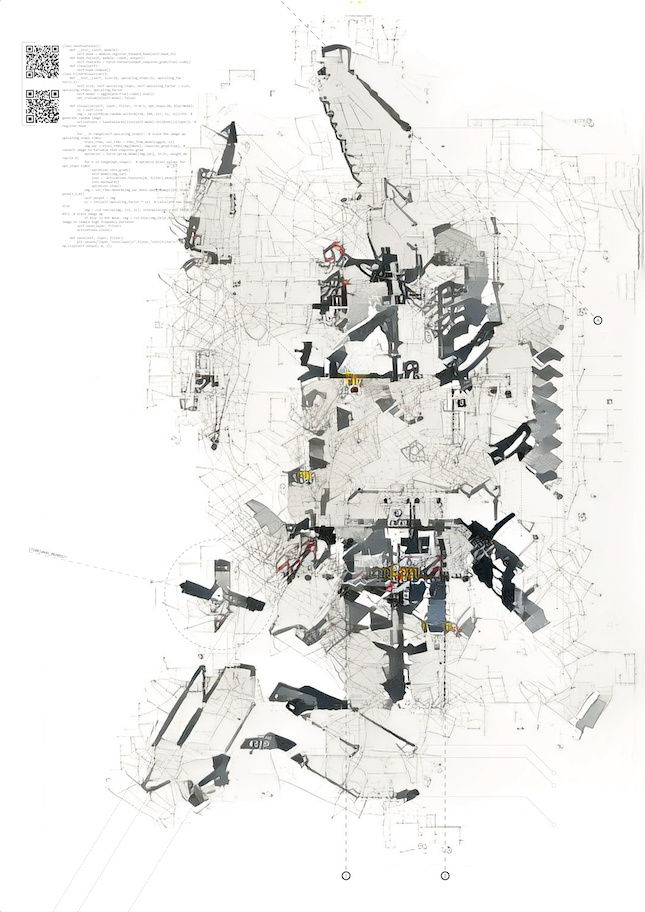How has contemporary architecture and culture been shaped by our access to digital tools, technologies, and computational devices? This was the central question of Aesthetics of Prosthetics, the Pratt Institute Department of Architecture’s first alumni-run exhibition curated by recent alumni and current students Ceren Arslan, Alican Taylan, Can Imamoglu and Irmak Ciftci. The exhibition, which closed last week, took place at Siegel Gallery in Brooklyn.
The curatorial team, made up of current students and recent alumni, staged an open call for submissions that addressed the ubiquity of “prosthetic intelligence” in how we interact with and design the built environment. “We define prosthetic intelligence as any device or tool that enhances our mental environment as opposed to our physical environment,” read the curatorial statement. “Here is the simplest everyday example: When at a restaurant with friends, you reach out to your smartphone to do an online search for a reference to further the conversation, you use prosthetic intelligence.”

As none of the works shown have actually been built, the pieces experimented with the possibilities for representation and fabrication that “prosthetic intelligence” allows. The selected submissions used a range of technologies and methods including photography, digital collage, AI technology, digital modeling, and virtual reality. The abundant access to data and its role in shaping architecture and aesthetics was a pervasive theme among the show’s participants. Ceren Arslan’s Los Angeles, for instance, used photo collage and editing to compile internet-sourced images that create an imaginary, yet believable streetscape. Others speculated about data visualization when drawings are increasingly expected to be read by not only humans, but machines and AI intelligence, as in Brandon Wetzel’s deep data drawing.

“The work shown at the exhibition, rather than serving as a speculative criticism pointing out towards a techno-fetishist paradigm, tries to act as recording device to capture a moment in architectural discourse. Both the excitement and skepticism around the presented methodologies are due to the fact that they are yet to come to fruition as built projects,” said the curators in a statement.











